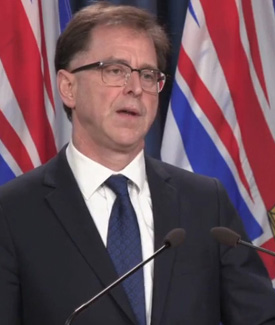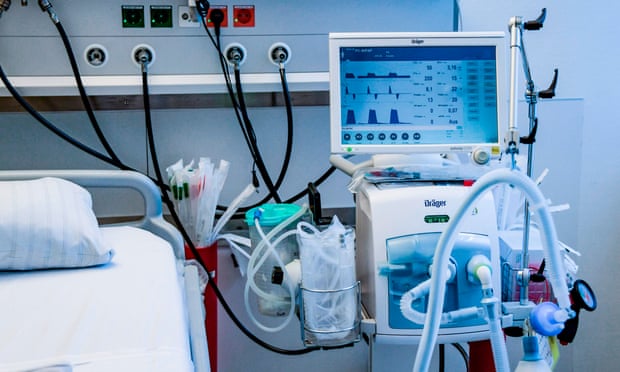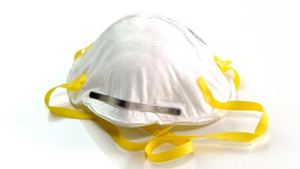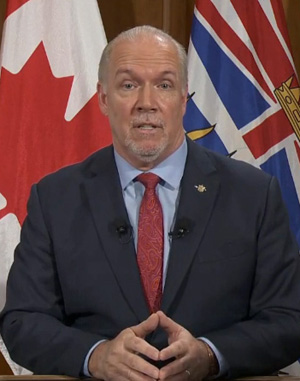
Tuesday March 31, 2020 ~ VANCOUVER
by Mary Brooke, B.Sc. ~ West Shore Voice News
It feels like things are about to turn a corner. This week or early next week marks a point in time where anyone who has been incubating the COVID-19 viral infection will begin to shows symptoms.
As BC Provincial Health Officer Dr Bonnie Henry has been telling us, not everyone presents with severe symptoms of the disease, but that elderly people (generally over age 65 or 70), people with underlying health conditions and people who are immuno-challenged will have a tougher time of it.
There is no treatment, cure or vaccine for COVID-19 at this time. Dr Henry and Health Minister Adrian Dix have been saying for weeks that they need everyone to be “100% all in” with regards to self-isolation and physical distancing. And this evening in a live address broadcast widely on TV, radio and social media Premier John Horgan appealed urgently for everyone “to take this very seriously… these are not suggestions, they’re the law”.

This afternoon in their 3 pm livestreamed media session, Dr Henry and Dix presented the day’s COVID-19 confirmed case stats, reported on the number of hospitalized cases, and the number of deaths.
The incubation period for COVID-19 infection is thought to be 14 days. With some urgency, Dr Henry said yesterday: “This is it. This is our watershed, these coming weeks. We will flatten that curve no matter how long it takes. This is our week to reinforce our effort. To do our part together while we’re staying apart.”
Today Dr Henry said: “We are a critical juncture. We are watching very carefully around the province”. And to reinforce that everyone must do their best, in light of still seeing gatherings in outdoor parks over this past weekend: “The next two weeks we must be true to who we are in BC. Most of us are doing the right thing 100% of the time.”
CONFIRMED CASES OF COVID-19:
![Confirmed cases of COVID-19 in BC as of March 31, 2020 [BC Center for Disease Control]](https://islandsocialtrends.ca/wp-content/uploads/2020/03/BCCDC-ConfrimedCOVIDcasesatMar3120-web.jpg)
As of today March 31, there are 1,013 confirmed cases of COVID-19 in BC (up from 970 yesterday), of which 507 have recovered but 24 have died. Cases by region: 476 in Vancouver Coastal Health, 348 in Fraser Health, 107 in Interior Health, 67 in Island Health (unchanged from yesterday), and 15 in Northern Health. To date, 43,229 tests have been completed. Today’s statistics (March 31, 2020) from the BC Centre for Disease Control.
NUMBER OF BEDS:
Now 19 primary hospital sites are prepared or preparing to handle an influx of COVID-19 that require acute care. That includes Royal Jubilee Hospital in Victoria and Nanaimo General Hospital on Vancouver Island, with Victoria General Hospital as a backup.
Today Minister Dix said there are 4,171 empty beds available for COVID-19 cases in the acute care hospital system. Those beds were freed up by cancelling pre-scheduled elective surgeries (a step taken on March 16 as a measure to help prepare bed opportunities for incoming COVID-19 cases should there now be a surge); that was a huge step to cancel long-awaited surgeries for so many people. Dix has repeated often that it was not a decision taken lightly.
Patients will often be moved in and out of the Intensive Care Unit (ICU) during their stay in hospital. The use of ventilators is usually done in cordoned off ICU areas so there is ideally no cross-contamination between COVID-19 cases and other hospital areas and workers.

Acute cases of COVID-19 require use of a ventilator in hospital, to assist the patient with breathing as the virus attacks cells in the lower lungs.
Today Minister Dix said there are 30 more ventilators — 15 that had been refurbished and 15 new ones. On top of the the last count of 705 for use in primary care centers for COVID-19, that brings the total to 735. There are more ventilators elsewhere in the system, including at BC Children’s Hospital and BC Women’s Hospital in Vancouver that are not directly included in the COVID-19 data.
MORE HEALTH CARE STAFF BACK ON DUTY:
Dix thanked the diligent cleaning staff in hospitals. He was also pleased to report that many retired health care workers have come back into availability during COVID-19 as needed, including 35 doctors, 444 nurses (RNs LPNs, NPs and health care assistants). There also now 530 allied health workers back and ready for duty including occupational therapists, dieticians, and physiotherapists.
WISE USE OF RESOURCES:
With regard to a municipally-based COVID-19 support service spawned by the City of Langford mid-March and now serving a broader area of the west shore, the Provincial Health Officer told media today that the service “is not a good use of resources for testing people at low risk”.
There is evidence of clashing objectives. Langford wants to protect their own residents and has the resources to launch a separate service. For Provincial Health Officer Dr Bonnie Henry, the goal is about focussing to understand where infection clusters are developing as part of an overall provincial strategy to flatten the curve.

“I am concerned that it is a diversion of resources unnecessarily,” said Dr Henry today. Resources would include trained health care personnel, tests kits, and masks that might otherwise be needed and used in hospitals for acute care, particularly if the number of acute care cases jumps suddenly or rapidly.
She admitted that the Langford-based service “could be helpful to people who have travelled or who have mild illness, and to advise them to isolate appropriately at home” but that people should be in contact with the health care system if symptoms get worse.
When calling the COVID-Langford help line a person first hears in a recorded message that they should call 911 or go to hospital emergency if they have trouble breathing or have chest pains. If that’s all a person listens to before hanging up, there has not been an opportunity to be calmly reminded to call ahead to emergency so that health care workers are prepared (themselves gowned up) and that a suitably isolated area is available for a patient’s arrival.
WORKING TOGETHER:
Tonight in his address to British Columbians, Premier Horgan appealed to everyone: “In times like these we must put partisanship and regional differences to one side,” said Horgan. He mentioned how provinces are working together and called this “a time of unprecedented cooperation”.
If there was ever a time to be a team player, it’s now. Where there are some individuals or jurisdictions that might be seen to be ‘going rogue’ that could lead to in-fighting and panic among communities. With all British Columbians “all in” for the same fight, BC has its best fighting chance against the microscopic enemy that is COVID-19.



